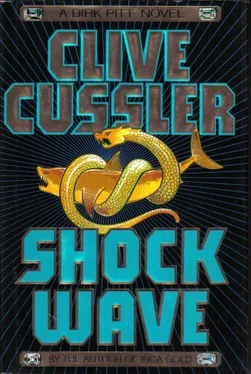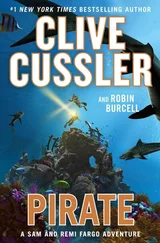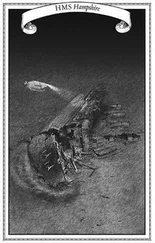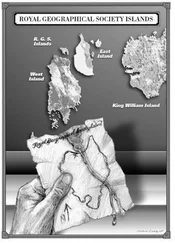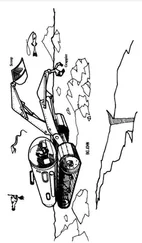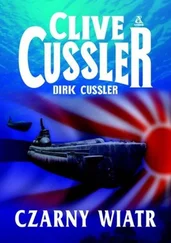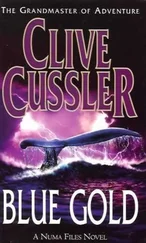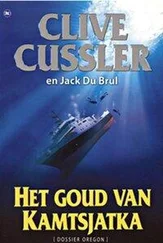Clive Cussler - Shock Wave
Здесь есть возможность читать онлайн «Clive Cussler - Shock Wave» весь текст электронной книги совершенно бесплатно (целиком полную версию без сокращений). В некоторых случаях можно слушать аудио, скачать через торрент в формате fb2 и присутствует краткое содержание. Год выпуска: 1996, ISBN: 1996, Издательство: Simon & Schuster, Жанр: Детектив, на английском языке. Описание произведения, (предисловие) а так же отзывы посетителей доступны на портале библиотеки ЛибКат.
- Название:Shock Wave
- Автор:
- Издательство:Simon & Schuster
- Жанр:
- Год:1996
- ISBN:978-0684802978
- Рейтинг книги:5 / 5. Голосов: 1
-
Избранное:Добавить в избранное
- Отзывы:
-
Ваша оценка:
- 100
- 1
- 2
- 3
- 4
- 5
Shock Wave: краткое содержание, описание и аннотация
Предлагаем к чтению аннотацию, описание, краткое содержание или предисловие (зависит от того, что написал сам автор книги «Shock Wave»). Если вы не нашли необходимую информацию о книге — напишите в комментариях, мы постараемся отыскать её.
Shock Wave — читать онлайн бесплатно полную книгу (весь текст) целиком
Ниже представлен текст книги, разбитый по страницам. Система сохранения места последней прочитанной страницы, позволяет с удобством читать онлайн бесплатно книгу «Shock Wave», без необходимости каждый раз заново искать на чём Вы остановились. Поставьте закладку, и сможете в любой момент перейти на страницу, на которой закончили чтение.
Интервал:
Закладка:
“Nine days and counting—” declared Sandecker, gazing at the unshaven men and weary women seated around the table in his hideaway conference room. What was a few days previously a neat and immaculate gathering place for the admiral’s closest staff members, now resembled a war room under siege. Photos, nautical charts and hastily drawn illustrations were taped randomly to the teak-paneled walls; the turquoise carpet was littered with scraps of paper and the shipwreck conference table cluttered with coffee cups, notepads scribbled with calculations, a battery of telephones and an ashtray heaped with Sandecker’s cigar butts. He was the only one who smoked, and the air-conditioning was turned to the maximum setting to draw off the stench.
“Time is against us,” said Dr. Sanford Adgate Ames. “It is physically impossible to construct a reflector unit and deploy it before the deadline.”
The sound expert and his student staff in Arizona intermingled with Sandecker’s NUMA people in Washington as if they were sitting at the same table in the same room.
The reverse was also true. Sandecker’s experts appeared to be sitting amid the student staff in Ames’ work quarters. Through the technology of video holography, their voices and images were transmitted across the country by photonics, the transference of sound and light by fiber optics. By combining photonics with computer wizardry, time and space limitations disappeared.
“A valid deduction,” Sandecker agreed. “Unless we can utilize an existing reflector.”
Ames removed his blue-tinted bifocals and held them up to the light as he inspected the lenses for specks, Satisfied they were clean, he remounted them on his nose. “According to my calculations, we’re going to require a parabolic reflector the size of a baseball diamond or larger, with an air gap between the surfaces to reflect the sound energy. I can’t imagine who you can find to manufacture one in the short time before the time window closes.”
Sandecker looked across the table at a tired Rudi Gunn, who stared back through the thick lenses of his glasses, which magnified eyes reddened from lack of sleep. “Any ideas, Rudi?”
“I’ve run through every logical possibility,” Gunn answered. “Dr. Ames is right, it is out of the question to consider fabricating a reflector in time. Our only prospect is to find an existing one and transport it to Hawaii.”
“You’ll have to break it down, ship it in pieces and then put it back together,” said Hiram Yaeger, turning from a laptop computer that was linked to his data library on the tenth floor. “No known aircraft can carry some thing of such a large surface area through the air in one piece.”
“If one is shipped from somewhere within the United States, supposing it is found,” insisted Ames, “it would have to go by boat.”
“But what kind of ship is large enough to hold a thing that size?” asked Gunn of no one in particular.
“An oil supertanker or an aircraft carrier,” said Sandecker quietly, as if to himself.
Gunn picked up on the statement immediately. “An aircraft carrier’s flight deck is more than large enough to carry and deploy a reflector shield the size Doc Ames has proposed.”
“The speed of our latest nuclear carriers is still classified, but Pentagon leaks indicate they can cut the water at fifty knots. Ample time to make the crossing between San Francisco and Honolulu before the deadline.”
“Seventy-two hours,” said Gunn, “from departure to deployment at the site.”
Sandecker stared at a desk calendar with the previous dates crossed out. “That leaves exactly five days to find a reflector, get it to San Francisco and deploy it at the convergence zone.”
“A tight schedule, even if you had a reflector in hand,” said Ames steadily.
“How deep does it have to be rigged?” Yaeger asked Ames’ image.
Almost as if she were cued, a pretty woman in her mid-twenties handed Ames a pocket calculator. He punched a few numbers, rechecked his answer and then looked up. “Allowing for the overlapping convergence zones to meet and surface, you should place the center of the reflector at a depth of 170 meters.”
“Current is our number one problem,” said Gunn. “It’ll prove a nightmare trying to keep the reflector in place long enough to bounce the sound waves.”
“Put our best engineers on the problem,” ordered Sandecker. “They’ll have to design some kind of rigging system to keep the reflector stable.”
“How can we be sure that by refocusing the converging sound waves we can return them on a direct channel back to the source on Gladiator Island?” Yaeger asked Ames.
Ames impassively twisted the ends of the mustache that extended beyond his beard. “If the factors that propagated the original sound wave, such as salinity, water temperature and the sound speed, remain constant, the reflected energy should return to the source along its original path.”
Sandecker turned to Yaeger. “How many people are on Gladiator Island?”
Yaeger consulted his computer. “The intelligence reports from satellite photos suggest a population of around 650 people, mostly miners.”
“Slave labor imported from China,” muttered Gunn.
“If not kill, won’t we injure every living thing on the island?” Sandecker asked Ames.
Another of Ames’ students unhesitantly passed a sheet of paper into the acoustics expert’s hands. He scanned it for a moment before looking up. “If our analysis is close to the mark, the overlapping convergence zones from the four separated mining operations scattered throughout the Pacific will drop to an energy factor of twenty-eight percent when they strike Gladiator Island, not enough to maim or cause harm to human or animal.”
“Can you estimate the physical reaction?”
“Headaches and vertigo along with mild nausea should be the only discomforts.”
“A moot point if we can’t set a reflector on site before the convergence,” Gunn said, staring at a chart on the wall.
Sandecker drummed his fingers on the table thoughtfully. “Which puts us back in the starter’s gate before the race.”
A woman in her forties, fashionably dressed in a conservative blue suit, stared contemplatively at one of the admiral’s paintings, the one illustrating the famous World War II aircraft carrier Enterprise during the battle for Midway. Her name was Molly Faraday, and she was a former analyst with the National Security Agency who had jumped over to NUMA at Sandecker’s urging, to be his intelligence agency coordinator. With soft toffee-colored hair and brown eyes, Molly was all class. Her gaze swiveled from the painting to Sandecker and fixed him with a somber look.
“I think I might have the solution to our problems,” she said in a quiet monotone.
The admiral nodded. “You have the floor, Molly.”
“As of yesterday,” she lectured, “the Navy’s aircraft carrier Roosevelt was docked at Pearl Harbor, taking on supplies and making repairs to one of her flight-deck elevators before joining the Tenth Fleet off Indonesia.”
Gunn looked at her curiously. “You know that for certain?”
Molly smiled sweetly. “I keep my toes dipped in the offices of the Joint Chiefs.”
“I know what you’re thinking,” said Sandecker. “But without a reflector, I fail to see how a carrier at Pearl Harbor can solve our dilemma.”
“The carrier is a side bonus,” explained Molly. “My primary thought was a recollection of an assignment at a satellite information collection center on the Hawaiian island of Lanai.”
“I didn’t know Lanai had a satellite facility,” said Yaeger. “My wife and I honeymooned on Lanai and drove all over the island without seeing a satellite downlink facility.”
Читать дальшеИнтервал:
Закладка:
Похожие книги на «Shock Wave»
Представляем Вашему вниманию похожие книги на «Shock Wave» списком для выбора. Мы отобрали схожую по названию и смыслу литературу в надежде предоставить читателям больше вариантов отыскать новые, интересные, ещё непрочитанные произведения.
Обсуждение, отзывы о книге «Shock Wave» и просто собственные мнения читателей. Оставьте ваши комментарии, напишите, что Вы думаете о произведении, его смысле или главных героях. Укажите что конкретно понравилось, а что нет, и почему Вы так считаете.
